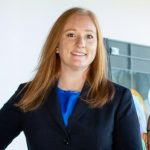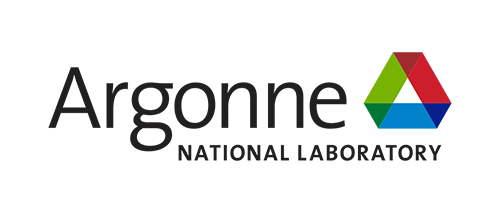March 2023 Edition

Deena Wright, Senior Program Specialist, STPO
Wright finds herself at home among the ‘magic’ of Argonne
Deena Wright, a senior program specialist in the Science and Technology Partnerships and Outreach (STPO) directorate, has moved several times over the years. But Argonne National Laboratory is her home, where she remains fascinated by its “magic.”
“There are so many things to love about my role,” said Wright. “But knowing that my contributions support the science and entrepreneurs who are the change-makers for our environmental stability, improvement and longevity—that is where the magic happens—and that truly makes it special.”
Wright facilitates programming for the innovators in Chain Reaction Innovations (CRI), an entrepreneurship program that embeds clean energy and climate tech start-up companies at the lab for about two years to help them de-risk and scale their technologies. Wright helps these innovators learn how to be entrepreneurs.
In addition, Wright is the program lead for Students for Energy and Entrepreneurial Development (SEED), a new internship program. CRI piloted SEED last summer and aims to launch the program this fall. This internship is designed to support undergrad students from minority-serving institutions in the Chicago area. They will be coached in entrepreneurial and business development skills and paired with CRI start-up companies for real-life experiences.
“They are astoundingly bright scientists already, but learning about business, project management, finance, marketing, pitching, and more are sometimes new and challenging for them,” said Wright. “CRI is here to help them develop as entrepreneurs by providing foundational knowledge in business areas. My role is developing the programming they participate in.”
The magic she sees involves such startups as Meati Foods, where they turn mycelium (the root network of mushrooms) into sustainable proteins, and ClearFlame Engine Technologies, which designed a modification for diesel engines so they can use cleaner fuels, like ethanol, to reduce emissions.
Wright started at Argonne in 2010 as an administrative assistant. She worked at Argonne for about eight years before being invited to interview with CRI as its strategic operations lead. She joined the team and continues to grow in her current role.
“I had no idea what CRI had in store for me at the time, but what a happy accident to have landed directly in a field that I didn’t know I was so passionate about—clean energy and climate tech,” Wright said. “My inspiration now comes from the innovators in CRI—their passion, drive and creativity.”
Wright’s experience has proven that science is like magic, but real.
“Don’t base your opinions of science on what you’ve learned in school,” Wright said. “I know that sounds odd, but science is so much more than the basic level you may have been exposed to in middle school and high school. It’s amazing and powerful, and although it can be complicated, you can do it. Many times, the reason people ‘don’t like science’ is because they didn’t have the right teacher. Give it a chance and you might be surprised at just how remarkably interesting it can be!”
Wright believes that if you’re working towards leadership roles it’s useful to study other leaders who you aspire to be like.
“Watch how they handle situations and manage people,” she said. “When you’re ready, which is sooner than you’ll think, go for it. Don’t doubt yourself because you’re likely capable of more than you’re giving yourself credit for.”
Wright was born in Tampa, Florida, and moved more than 30 times in her life, because her father worked around the country as a troubleshooter for his company. She now lives in Oswego with her husband, Rob Wright, a mechanical engineering specialist with the Advanced Photon Source (APS) at Argonne, and her daughter and son, who are twins. She also has two stepsons.
Wright took off a few years when her twins were born, which complicated her efforts to re-enter the workforce, despite being a college graduate with work experience. Overcoming that barrier meant being relentless and not giving up. She started in lower-level positions to get a foot in the door, and worked hard to move forward, she said.
“I don’t regret my decision to take those years off when they were born, and I would choose the same path again,” Wright said.
Success feels good—it is a natural motivator on its own and tends to breed more success, said Wright.
“Like everyone, I have goals in life and being successful generally leads to some of those goals being met,” she said.
Most of all, she believes you should enjoy what you do.
“It may not be your destination but finding enjoyment in what you’re doing will make your days feel more fulfilling,” Wright said. “If you truly can’t find enjoyment in any facet of what you’re doing, it’s probably a sign to move on.”




